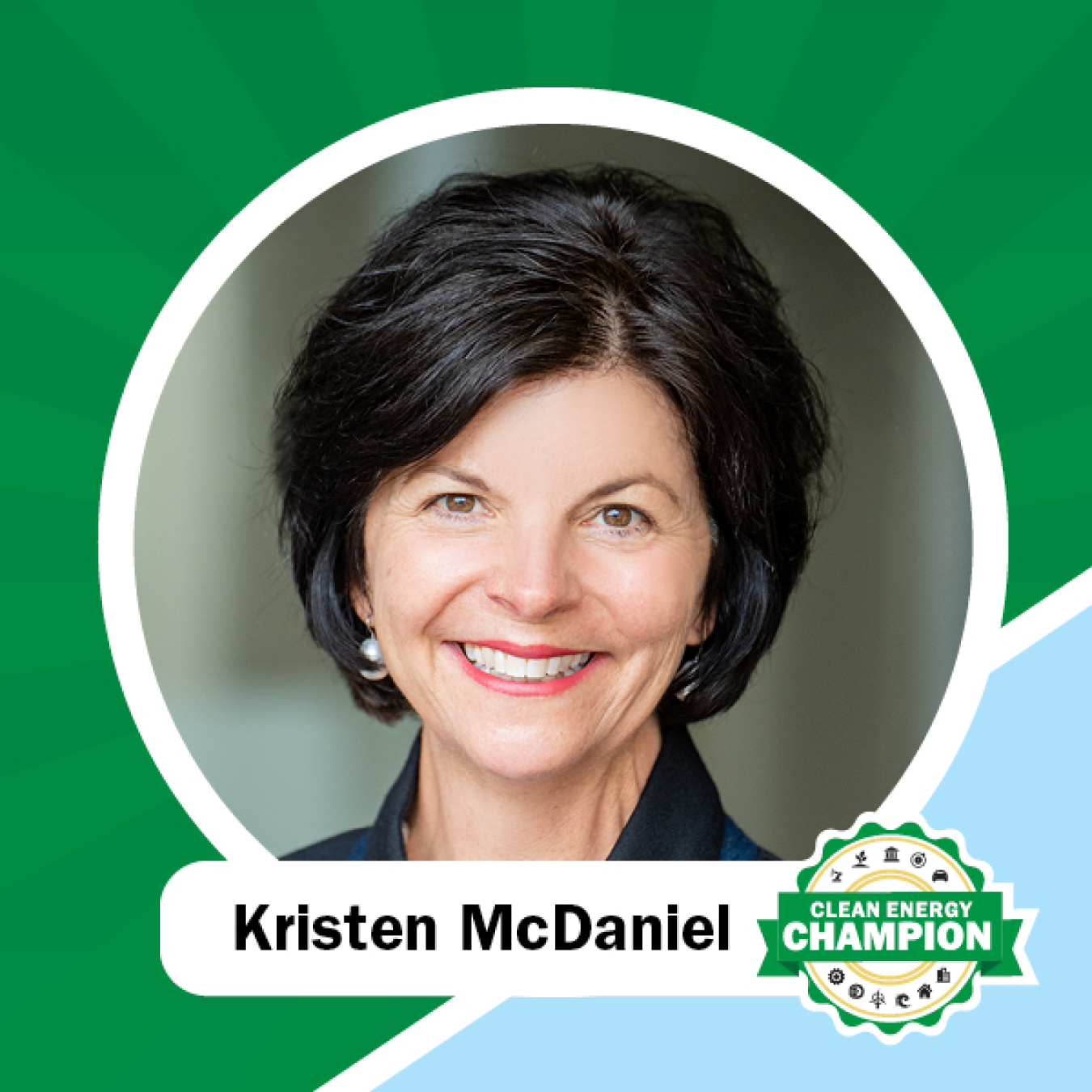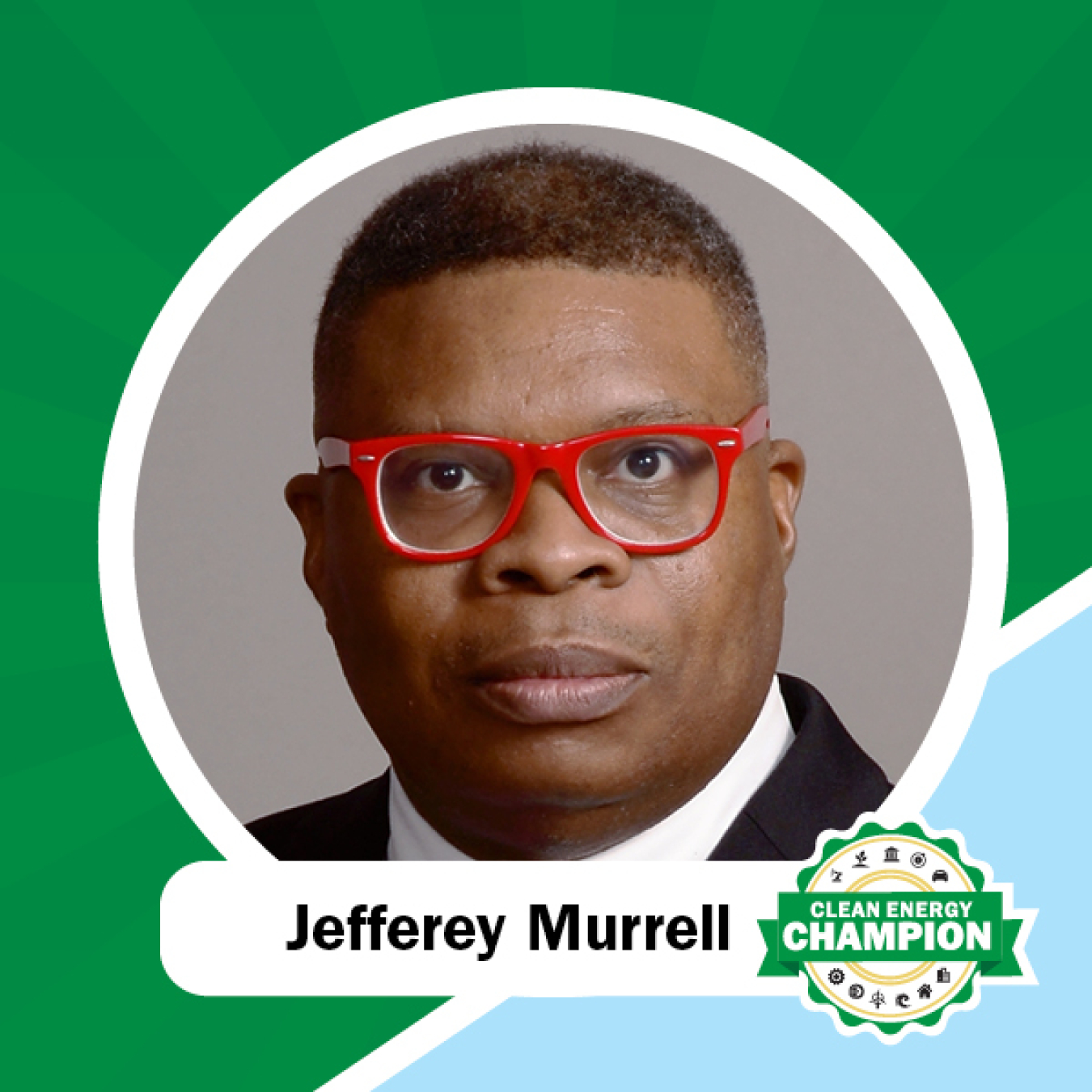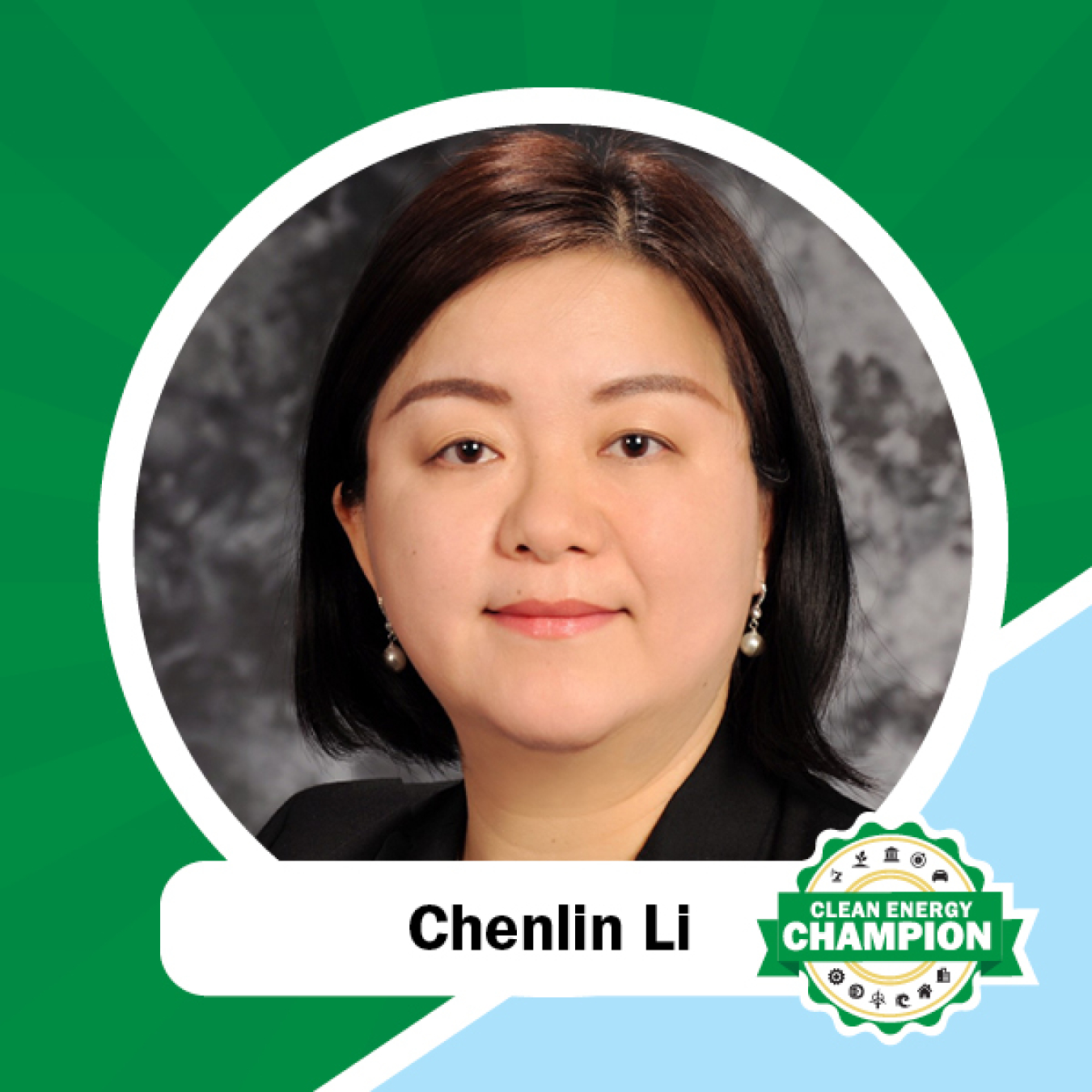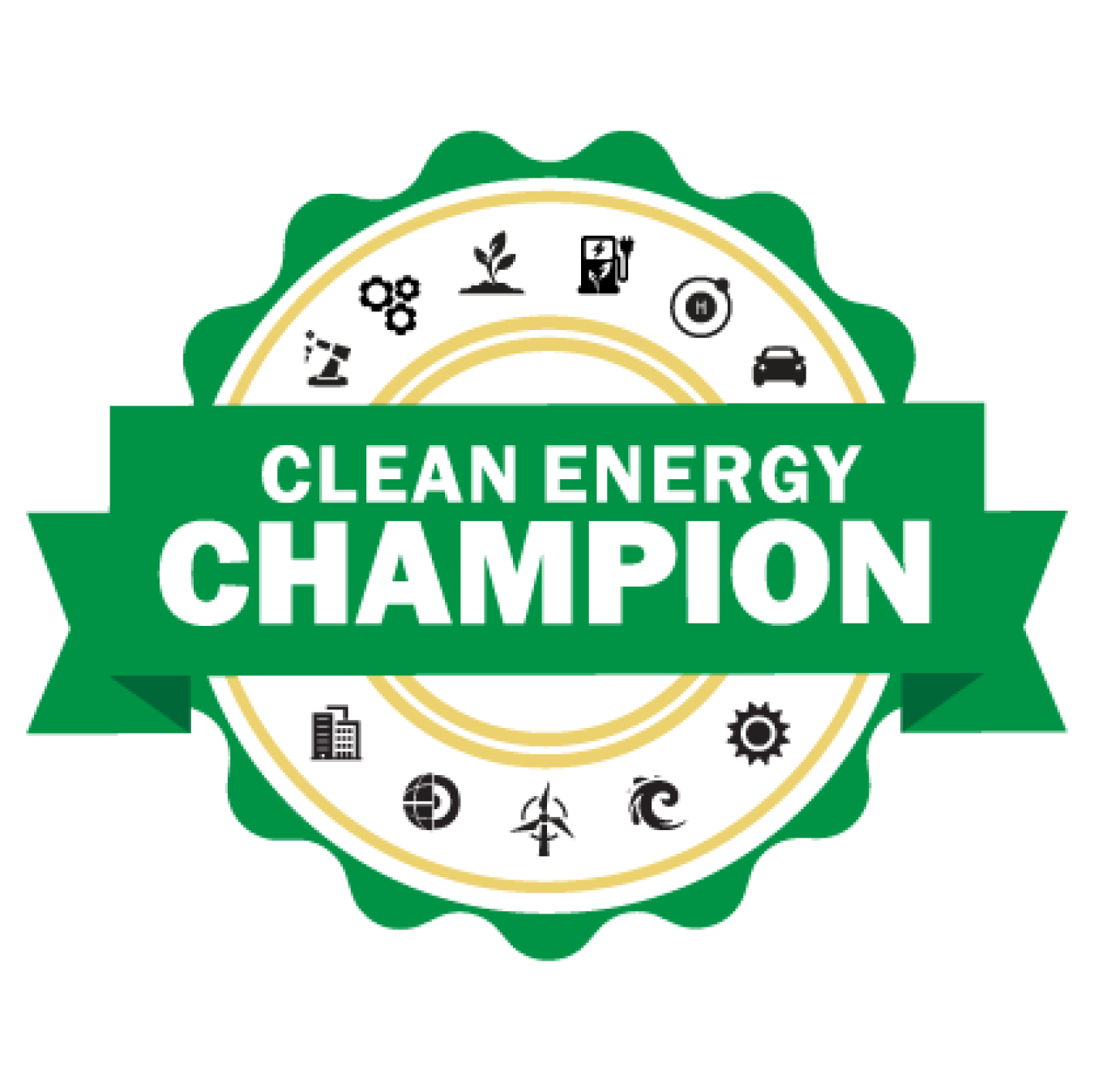This week, we’re celebrating people working in public service who are helping build our nation’s clean energy future. Meet three EERE employees who tell us about their career paths and offer advice about jump-starting your clean energy career.
Office of Energy Efficiency & Renewable Energy
May 2, 2022This is the sixth in a series of stories about Clean Energy Champions—real people who are taking action to support or join the transition to a clean energy economy. Their stories illustrate the many ways you, too, can become a Clean Energy Champion.
Since 1985, the United States has celebrated Public Service Recognition Week to honor the people who serve our nation as federal, state, county, and local government employees. Here, you can meet some of them who work at the U.S. Department of Energy (DOE) Office of Energy Efficiency and Renewable Energy (EERE).

Kristen McDaniel
General engineer, Advanced Manufacturing Office
20 years of public service
What drew you to public service?
People. I love helping people see the opportunities and possibilities in front of them. Public service lets me do what I love every day.
What aspect of public service do you find most rewarding?
Helping our award recipients navigate the complex world of financial assistance and providing ongoing technical assistance and guidance so their clean energy ideas and technologies can become reality.
What was your path to EERE/your career in clean energy?
I worked in the oil and gas industry as a newly minted engineer, then moved into community development and planning before finding my way to EERE. My first job at EERE was as a contractor supporting the Industrial Assessment Centers (still one of my favorite programs!). From then on, I’ve been hooked on what’s possible through our work and am committed to making a difference as part of EERE’s awesome team!
What advice do you have for Clean Energy Champions who want to pursue careers in public service?
First, stay focused on the mission—even the most mundane tasks take on significance when you realize they contribute to achieving our clean energy goals and making a difference in our communities. Second, stay open—ask questions, be willing to try new things and work with new people, and recognize that our diversity and differences are strengths to be leveraged for the greatest good.

Jefferey B. Murrell, P.E.
Program manager, Federal Energy Management Program
23 years of public service
What drew you to public service?
My parents were civil servants and taught me that I have a duty to serve my fellow citizens, especially the "least of these," as stated in the New Testament. After years of being a consulting engineer or chemist working on state and federal projects across the Southeast, I started working for the Alabama Department of Transportation in 1999. Then I began my journey of love and sweat to improve the human potential and serve the general public. I installed energy and water meters at military installations and government facilities across the world, served as an operational energy director in Afghanistan, worked at NASA headquarters on energy and cybersecurity projects, and helped clean up several former federally owned oil fields in California.
What aspect of public service do you find most rewarding?
I love the "cradle-to-grave" aspect of my work. Developing the project or program, keeping it alive, and reaping the harvest when it is completed. Along the way, you can witness the positive impacts on the general public. I especially love cultivating projects in which I can use my professional philosophy: think differently. I enjoy managing high-risk, high-reward programs and projects, as well as emerging ones, for their challenges and eventual benefits to the American people.
What was your path to EERE/your career in clean energy?
In 2005, I worked in the Army and helped design and construct renewable energy projects. Then I helped Fort Benning officials install the first-ever biofuel pump at a military installation and worked to allow Fort Knox to extract natural gas from shale rock underneath the installation to generate electricity. From 2009 to 2012, my team at the U.S. Army Corps of Engineers installed more than 10,000 energy and water meters across the world. As the operational energy director for U.S. Armed Forces Afghanistan, I championed renewable energy and energy resilience projects at U.S.- and NATO-operated military installations. In 2016, I joined the Federal Energy Management Program to help federal agencies and others design and deploy energy resilience, renewable energy, and energy management projects.
What advice do you have for Clean Energy Champions who want to pursue careers in public service?
Continue to think differently and take calculated risks, despite how it may affect your immediate career. In 2021, I paused my energy career to serve as a contracting officer representative alternate at the Fort Bliss and Long Beach emergency intake shelters to help support and reunite more than 10,000 unaccompanied minors found along the Southwest U.S. borders with family members and sponsors in the United States. When civil servants and Clean Energy Champions think differently, we can promote true environmental justice for the most vulnerable. We can be the living warriors of this concept.

Chenlin Li
Technology manager, Bioenergy Technologies Office
13 years of public service
What drew you to public service?
I joined the Bioenergy Technologies Office after performing and managing research and development projects at national labs for more than 12 years. I am motivated by the mission-driven work environment at DOE. We have the opportunities and responsibility to make a big impact in supporting critical technology advancement that will bring clean energy benefits to all Americans.
What aspect of public service do you find most rewarding?
The outcome and impact that DOE funding has on research communities and industries. I enjoy the process of developing and using my knowledge, experience, and skills in service, and helping foster the growth of innovative bioenergy research ideas from the lab to large-scale deployment.
What was your path to EERE/your career in clean energy?
I became passionate about renewable energy, waste reduction, and environmental sustainability in graduate school, and this drove me to pursue a career in waste-to-bioenergy. I am very blessed to have worked at three DOE national labs doing hands-on research to address science and engineering problems. In 2017 I had an assignment that supported the Bioenergy Technologies Office, and I was excited to see the big picture and vision for the clean energy bioeconomy. I decided to change my career from the technical research side to a more programmatic, strategic role. I am thrilled that I can help support national labs, research institutions, and industry on exciting research ideas and technology development for bioenergy and bioproducts.
What advice do you have for Clean Energy Champions who want to pursue careers in public service?
I believe the hardest part of reaching a goal is jumping out of your comfort zone and having the courage to try to adapt to change. Do not limit yourself to just one area when you pursue your career. Aim to build your personal skills and competencies to increase your opportunities and grow within public service.
Clean Energy Jobs
EERE is hiring! Check out these career opportunities, and read more about jobs for Clean Energy Champions.
Clean En∙er∙gy Cham∙pi∙on
/klēn/ /ˈenərjē/ /ˈCHampēən/
noun
1. A person or group that takes action to support or join the transition to a renewable energy economy, with the knowledge that reducing carbon emissions provides daily benefits to every American so they can live happy and healthy lives.


